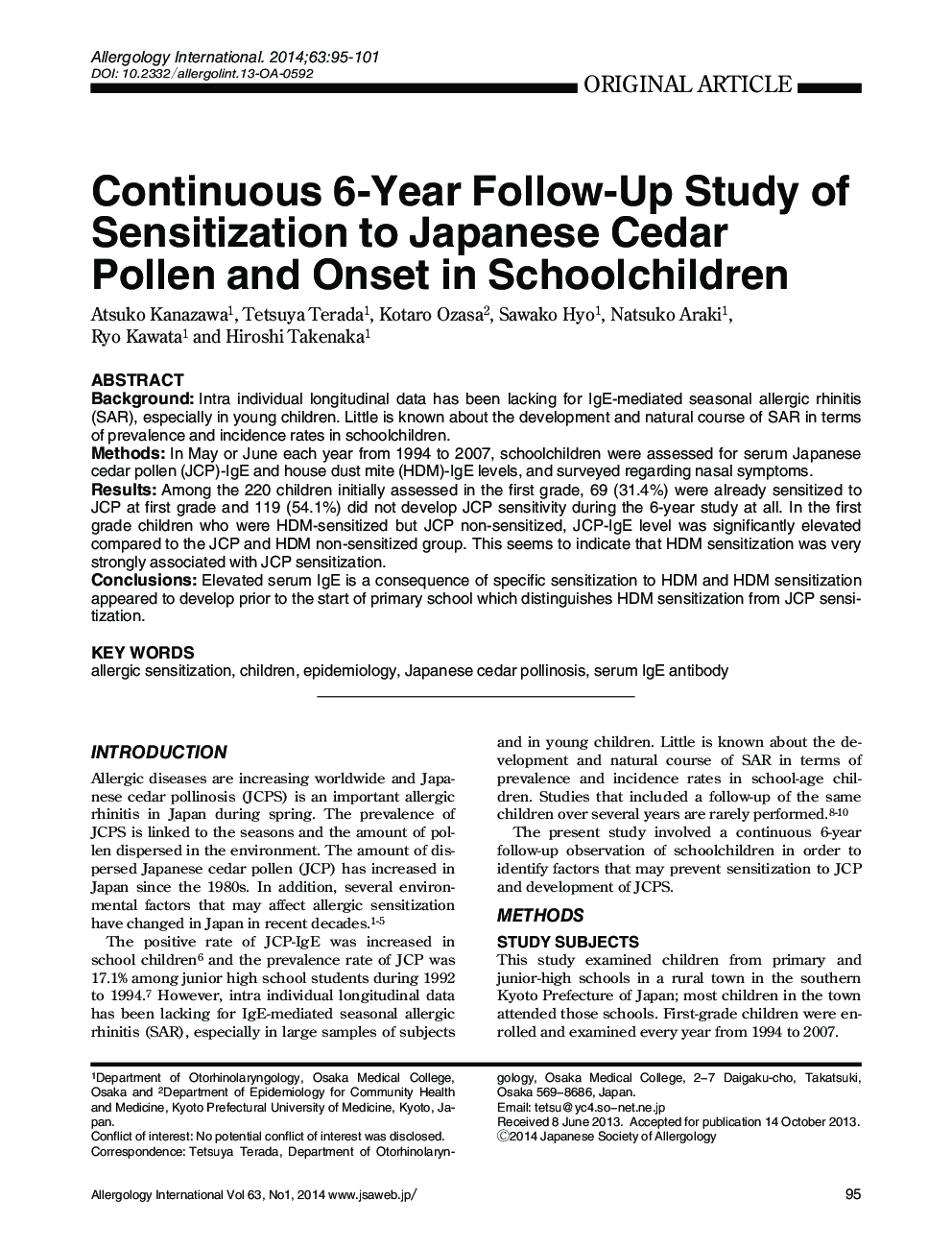| کد مقاله | کد نشریه | سال انتشار | مقاله انگلیسی | نسخه تمام متن |
|---|---|---|---|---|
| 3340662 | 1214066 | 2014 | 7 صفحه PDF | دانلود رایگان |
ABSTRACTBackgroundIntra individual longitudinal data has been lacking for IgE-mediated seasonal allergic rhinitis (SAR), especially in young children. Little is known about the development and natural course of SAR in terms of prevalence and incidence rates in schoolchildren.MethodsIn May or June each year from 1994 to 2007, schoolchildren were assessed for serum Japanese cedar pollen (JCP)-IgE and house dust mite (HDM)-IgE levels, and surveyed regarding nasal symptoms.ResultsAmong the 220 children initially assessed in the first grade, 69 (31.4%) were already sensitized to JCP at first grade and 119 (54.1%) did not develop JCP sensitivity during the 6-year study at all. In the first grade children who were HDM-sensitized but JCP non-sensitized, JCP-IgE level was significantly elevated compared to the JCP and HDM non-sensitized group. This seems to indicate that HDM sensitization was very strongly associated with JCP sensitization.ConclusionsElevated serum IgE is a consequence of specific sensitization to HDM and HDM sensitization appeared to develop prior to the start of primary school which distinguishes HDM sensitization from JCP sensitization.
Journal: Allergology International - Volume 63, Issue 1, 2014, Pages 95-101
